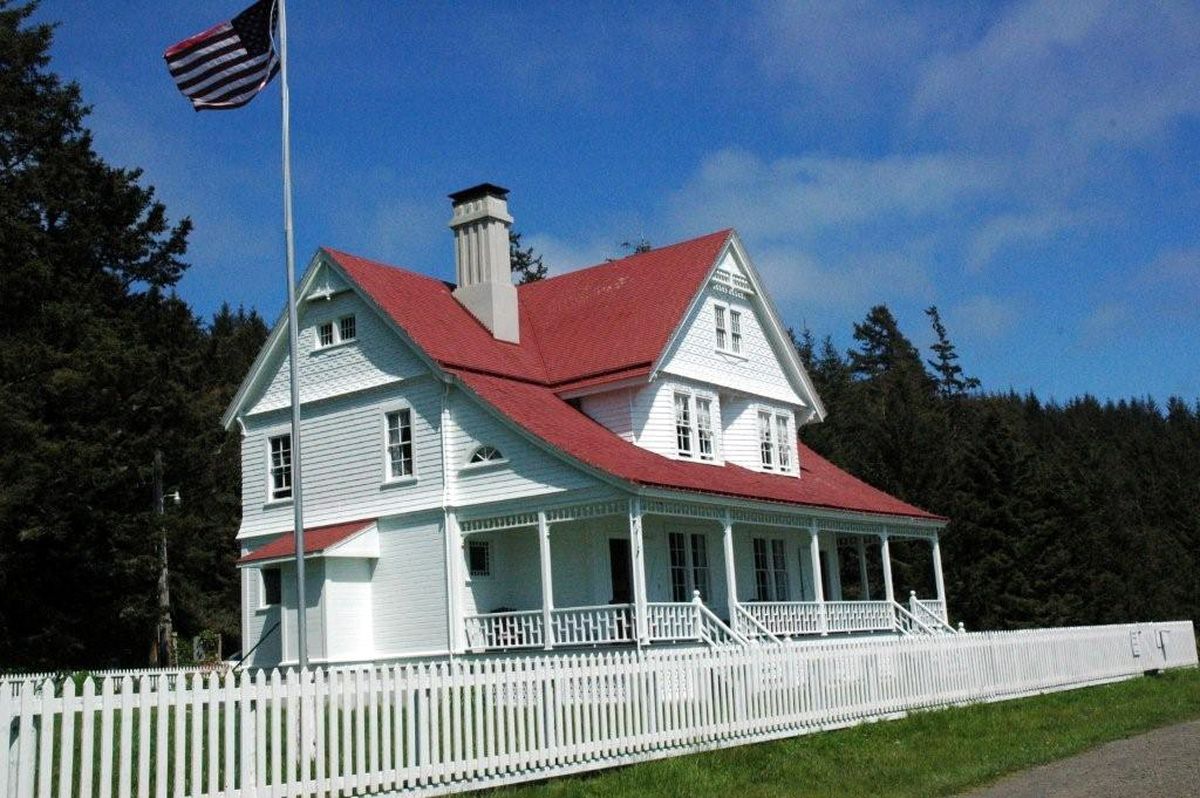A guiding lighthouse
Oregon park maritime structure rich in history

Think about all the buildings that have been built. Buildings that can inspire us, that can draw us to them emotionally and physically. Imagine a structure that will create a feeling of being out of harm’s way. A lighthouse can do all that. Lighthouses along the Oregon coast have been an inspiration for many sailors and visitors ever since they have been constructed.
Of course they were built for less lofty and more practical reasons. Sentimentality was not on the minds of the designers and builders, but rather they had an essential but an unexciting motive – safety. That is, unexciting unless you were on a wind-powered ship with two or three masts sailing along the rocky Oregon coast in the mid-18th century.
Fog, heavy seas, treacherous currents, high winds, storms and worse were the shifting sandbars and rocks at the entrance to the main rivers flowing into the sea. All these hazards made ship travel an extremely risky experience. There were no other means of transporting goods or people to the small but rapidly developing communities along the coast. Arriving at a port to unload or pick up freight on the northwest coast was a gamble with the crew’s lives, passengers, cargo and ship at stake.
Shipwrecks were almost as common as spotting water spouts from migrating gray whales. By 1873 there were 69 reported major ship wrecks along Oregon’s 229 miles of coastline. A plan was developed to place lighthouses spaced evenly along the shoreline to allow ships, as they sailed north or south, to be in visual contact with one light almost all the time. The lights would also be placed to help direct ships into safe harbors and warn of rocky outcrops and other navigation hazards.
The Oregon coast eventually had nine lighthouses constructed. They have been preserved, restored, or replaced, eight of the nine are now accessible by car.
Heceta Head Lighthouse built on the side of a 1,000-foot-high piece of land jutting out into the ocean is probably the most photographed lighthouse because it offers a stunning scene. Built in 1893, the lighthouse is located 205 feet above the ocean on the southwest side of what is now a 549-acre Oregon State Scenic Viewpoint Park. Viewed from an overlook on Highway 101, many visitors grab a photo and move on. They don’t realize that this area offers more to them than just a quick photo opportunity.
There is a system of trails around the head, tide pools, a sandy beach for beach combing, tours of the lighthouse and other historic buildings, a bed and breakfast at the light keeper’s residence and spectacular views of the coastline and ocean.
At a cost, in 1893, of $80,000 the lighthouse provided some safe travel to the small but flourishing town of Florence, whose commerce was completely isolated except by ship. The construction materials and the buildings did not come easily for the lighthouse. Much of the explosives, pipes and bricks were hauled by horse drawn wagons along a very bad and rough wagon road from Florence 12 miles away. Bricks for the tower were made and shipped from San Francisco. The glass prisms to enhance the light were shipped from Great Britain.
The construction, using 56 men, took two years because of delays caused by severe winter storms. Eventually the lighthouse, two oil houses, barn, single home for the main keeper and a duplex for the assistants were finished. In 1932 the coastal highway was completed which required a high arch-spanned bridge across Cape Creek and a tunnel through the hill-side toward Sea Lion Point and Florence. The road relieved the constant isolation and remoteness of living at the light. Two years later the kerosene lamp was replaced by an electric light bulb.
The principal light keeper’s home built in Queen Anne-style was eventually converted to a bed and breakfast. This is an unusual and exciting chance for overnight accommodations. There not too many B&B’s that can offer staying in a historic building overlooking the ocean and rocky shoreline within sight of a 56-foot lighthouse tower. At night the working light flashes on for five seconds each minute. The light is magnified by the original 392 prisms. In the past, the kerosene lamp provided enough light that the beam could be seen 21 miles out to sea. The only limitation on a clear day is the curvature of the earth when a ship is beyond the horizon.
Today’s electric light reaches out the same distance but provides a brighter beam of light and still uses the original prisms. Kim Wright, manager of the B&B recommends reservations especially on weekends and summer nights but off season and weeknights a drop-in guest often can get a room.
Travelers using RVs or tents tent can find sites nearby at Carl G. Washburne Memorial State Park. There is a mile and half trail that leads to the lighthouse with spectacular views of the coastline and ocean. For those who prefer a nice motel room, Florence is about 12 miles south of the lighthouse. Best Western Pier Point Inn overlooks the Siuslaw River and bridge. Driftwood Shores fronts the ocean and beaches.